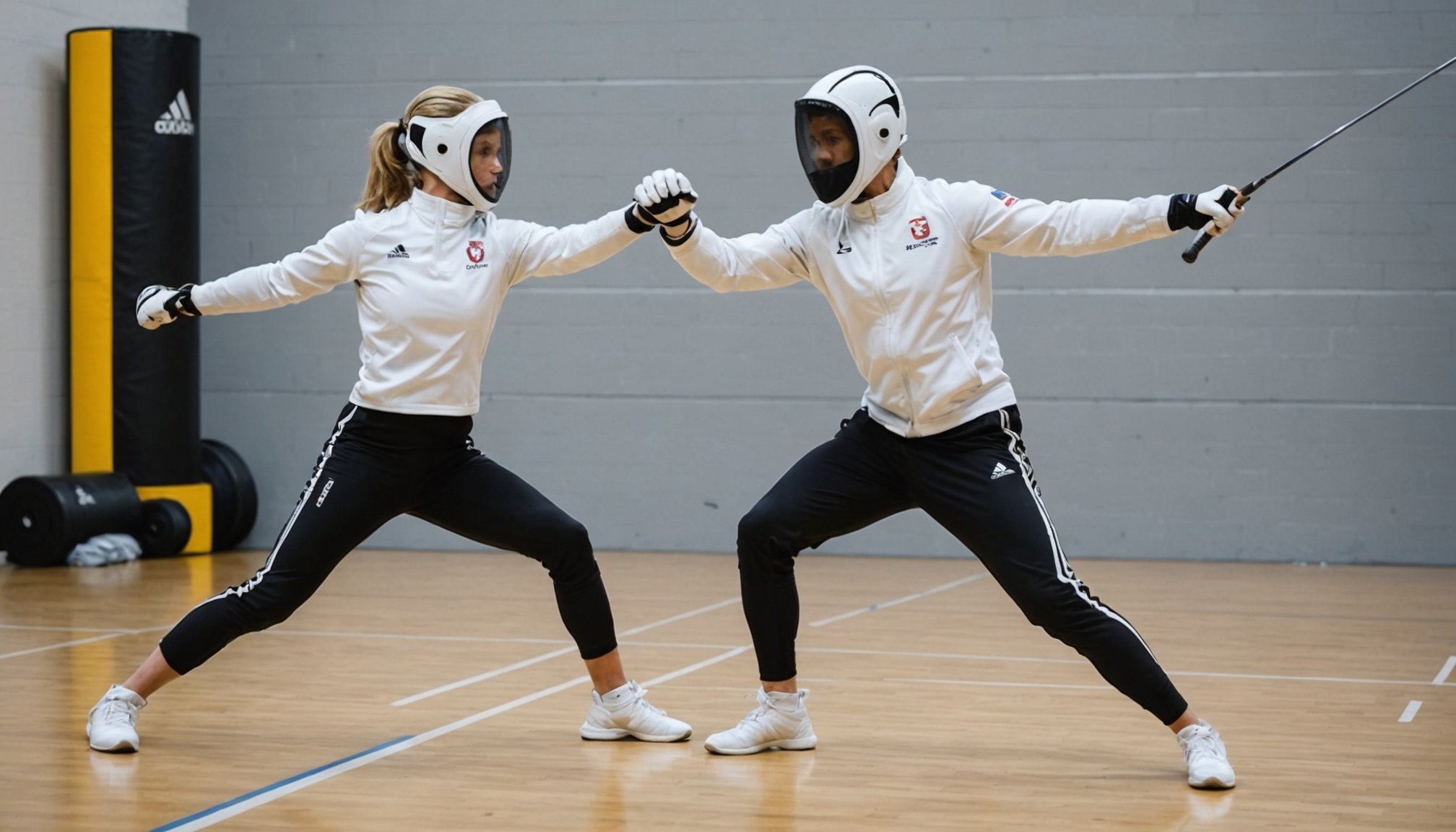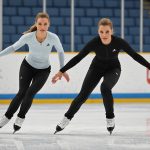Understanding the Importance of Plyometric Training for Fencing
Plyometric training is a crucial aspect of athletic training, particularly for sports requiring explosive movements like fencing. This form of training is based on exercises that harness the stretch-shortening cycle of muscles to improve force production in the shortest time possible. Essentially, it involves actions such as jumps, hops, and bounds, which can significantly enhance both power and speed.
In fencing, explosive strength is vital, especially during lunges—a fundamental move. The speed and power of a lunge can often determine the outcome of a bout. Plyometric exercises focus on enhancing the muscles’ ability to generate force rapidly, directly benefiting these actions by increasing the athlete’s explosive capabilities.
In parallel : Mastering defense: how biomechanics transforms training for uk fighters
Furthermore, reaction time and agility are crucial for a fencer, who must deflect attacks and respond swiftly. Through plyometric training, athletes can sharpen their reflexes and improve their agility. The dynamic nature of plyometric movements helps fencers cultivate faster reaction times, allowing them to be more agile and better equipped to handle opponents’ advances.
By integrating plyometric exercises into their routine, fencers can optimize their overall fencing performance, enabling them to perform more effectively and efficiently on the piste.
Have you seen this : What are the benefits of cross-training in different combat sports for overall skill development?
Dynamic Plyometric Exercises to Enhance Fencing Lunges
Incorporating dynamic exercises into your training routine can significantly boost your fencing lunges. Plyometric techniques, known for their explosive power, are particularly effective.
Box Jumps for Leg Power
Box jumps are an excellent way to develop leg strength and power, critical for impactful lunges. Start by standing in front of a box or platform. Bend your knees slightly and swing your arms back for momentum. Then, jump explosively onto the box. Extend your knees and hips in a controlled manner at the top. Ensure a soft landing to avoid joint stresses. This exercise engages the quads, calves, and core, vital muscles for fencing agility.
Lateral Bounds for Agility
Lateral bounds hone agility and lateral quickness, which are essential in fencing maneuvers. Begin by standing on one leg. Push off laterally, landing softly on the opposite leg. Maintain balance and repeat rhythmically. These dynamic exercises target your inner and outer thighs, improving side-step speed and lunging precision.
Depth Jumps for Explosive Strength
Depth jumps enhance explosive strength rapidly. Step off a box, land lightly, and then immediately leap vertically. Focus on minimizing ground contact time to maximize power. Proper form is crucial to prevent injuries: keep knees aligned with your toes and engage your core. These plyometric techniques boost fast-twitch muscle fibres, improving fencer lunges’ speed and effectiveness.
Structuring a Training Program for UK Athletes
Developing an effective training program for UK athletes requires a strategic approach that includes coaching strategies and carefully planned components for performance enhancement. When incorporating plyometric exercises, consider their essential elements to build power and agility.
Plyometric training should emphasize exercises such as jump squats, box jumps, and burpees. These movements focus on enhancing muscle power and explosive strength. The optimal frequency for these exercises is typically two to three sessions per week, allowing for adequate recovery and adaptation. Each session should last around 20-30 minutes to prevent fatigue and maintain high performance.
Incorporating these exercises with a sport-specific focus, such as fencing, requires thoughtful integration. Balance the high-intensity plyometric drills with techniques that hone precision and quick reflexes necessary for fencing. This can be achieved by alternating between plyometric sessions and fencing practice, ensuring athletes maintain optimal performance levels in both disciplines.
Coaching strategies play a crucial role in monitoring athletes’ progress and adjusting the training regimen as needed. Tailor programs to individual needs and performance goals to maximize effectiveness. Utilize performance data and athlete feedback to refine training methods. By doing so, UK athletes can achieve enhanced performance outcomes, striking a balance between skill development and athletic prowess.
Measuring Progress and Performance Improvement
Tracking the effectiveness of lunging techniques requires an understanding of performance metrics. Key performance indicators include speed, power, and form during lunges. These help assess athlete improvement and provide tangible progress assessment.
Key Performance Indicators
Performance metrics such as speed and power can be measured using wearable technology. Devices that track velocity and force output allow athletes and coaches to monitor improvement over time. Using these metrics, athletes can determine if adjustments in technique are resulting in desired performance gains.
Tracking Methods
Progress assessment can also be accomplished through video analysis. Recording and reviewing lunging sequences enable both athletes and coaches to identify areas needing refinement. It can also highlight improvements in technique over time. Tracking software that provides detailed breakdowns of muscle engagement during lunges is invaluable for personalized analysis.
Success Stories
Case studies often demonstrate dramatic athlete improvement through refined lunging techniques. For example, track athletes may share testimonials of increased sprinting performance after focusing on enhancing lunging power. These stories underscore the effectiveness of tailored training programmes that use data-driven performance metrics for continuous improvement.
Consistently applying these methods ensures athletes can quantify their progress, leading to enhanced motivation and informed decision-making in training practices.
Expert Tips for Maximizing Training Results
Achieving optimal athletic performance often hinges on expert advice tailored to individual needs. This includes recognizing the importance of balancing intensity with sufficient recovery and adhering to training tips from seasoned professionals.
Focus on Recovery and Injury Prevention
Injury prevention and recovery are as crucial as the workout itself. Implementing effective recovery strategies can significantly enhance performance. Tips from experienced coaches often emphasize the importance of rest days, the use of foam rollers, and employing techniques like ice baths or massages to reduce muscle soreness. Proper stretching routines before and after workouts are also essential in maintaining flexibility and preventing injuries.
Nutrition’s Role in Training Effectiveness
Nutrition directly impacts training outcomes; thus, a well-rounded diet is pivotal for optimal performance. Incorporating adequate proteins for muscle repair, carbs for energy, and fats for sustained performance is key. Expert advice often suggests periodic nutritional assessments to adjust intake based on training intensity and type, ensuring nutrients are tailored to specific sporting goals.
Incorporating Sport-Specific Drills
Customising drills to fit the sport is crucial for reinforcing techniques. Engaging in sport-specific exercises can improve athletic performance by honing skills unique to each discipline. These drills should integrate aspects of strength, endurance, and agility while remaining mindful of the balance between training intensity and necessary rest periods. Following these tailored tips helps achieve a comprehensive and effective training regime.











